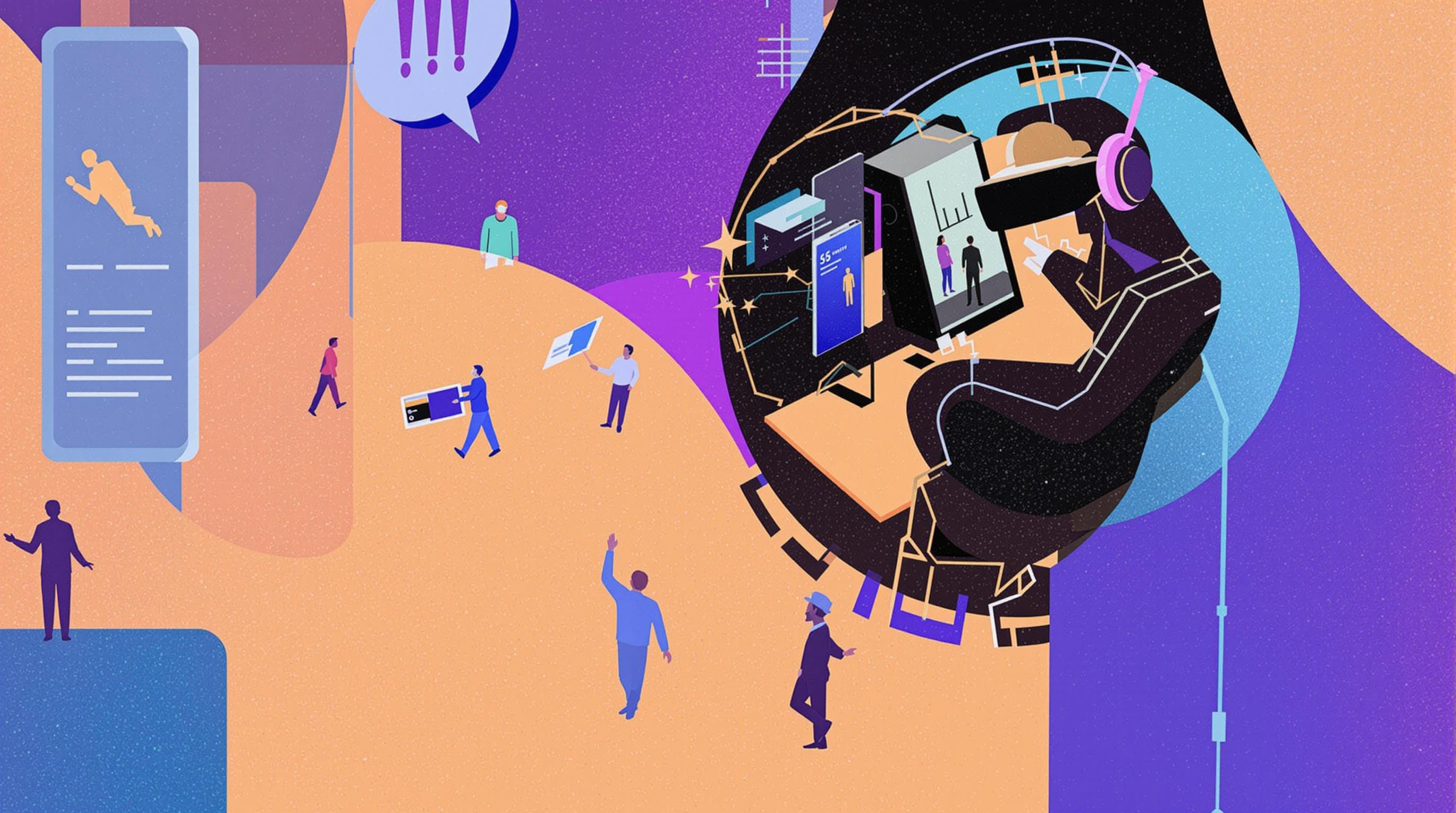Related Articles
- 7 Essential Digital Copyright Tools Revolutionizing Creative Protection Since 2019
- 7 Emerging AI-Powered Dispute Resolution Platforms Revolutionizing Conflict Management Since 2019
- 7 Cutting-Edge Insurance Apps Launched Since 2019 That Are Revolutionizing Coverage Verification
- 7 Cutting-Edge Workforce Management Tools Revolutionizing Employee Classification Efficiency in 2024
- Top 6 Innovative Lease Management Softwares Redefining Contract Control Since 2019
- Unveiling Overlooked Barriers: How ADA Rules Shape Access in Virtual Reality and Digital Worlds
Top 7 Innovative ADA-Compliant Tools Launched in the Last 5 Years: In-Depth Reviews & Rankings
Top 7 Innovative ADA-Compliant Tools Launched in the Last 5 Years: In-Depth Reviews & Rankings
Top 7 Innovative ADA-Compliant Tools Launched in the Last 5 Years: In-Depth Reviews & Rankings
Over the past five years, technological innovation has significantly enhanced accessibility tools designed to comply with the Americans with Disabilities Act (ADA). These advancements aim to create more inclusive experiences for individuals with disabilities across digital and physical environments. With a focus on usability and cutting-edge features, new ADA-compliant tools help businesses and individuals adhere to legal standards while promoting equal access.
In this in-depth review, we explore the top seven ADA-compliant tools launched recently, evaluating their functionalities, user impact, and innovation. Each section highlights a product's unique contributions and how it addresses specific accessibility challenges. This ranking serves as a guide for organizations seeking effective solutions to meet ADA requirements.
From voice-assisted navigation to automated captioning and tactile feedback devices, these tools represent the forefront of accessibility technology. The following sections delve into each tool, providing detailed insights and user-centric perspectives.
1. AccessiBe AI Accessibility Plugin
AccessiBe, launched with significant updates over the last five years, offers an AI-powered website accessibility plugin designed to ensure ADA compliance seamlessly. This tool utilizes artificial intelligence and machine learning to scan and adjust website elements automatically, addressing issues such as navigation barriers and screen reader compatibility.
Its intuitive user interface allows users with disabilities to customize accessibility settings according to their needs, including font adjustments, color contrast, and keyboard navigation. Businesses benefit from reducing the costly process of manual audits and remediation, while users receive an optimized browsing experience.
AccessiBe has been praised for its comprehensive approach and continuous updates to keep up with evolving ADA regulations. According to user reviews and expert evaluations (TechRadar, 2023), it stands out for balancing automation with customization, making digital content more accessible for all.
2. Microsoft Soundscape
Microsoft Soundscape represents a breakthrough in assistive technology for visually impaired users. Launched with important enhancements over recent years, this app leverages 3D spatial audio cues to help users navigate complex environments using only sound. It supports independent travel and situational awareness, integral components of ADA compliance in physical spaces.
By integrating GPS data and environmental information, Soundscape creates an auditory map of a user's surroundings, providing contextual information such as nearby landmarks and street crossings. The app's hands-free design and voice command compatibility facilitate ease of use.
The innovative use of spatial sound addresses accessibility in a novel sensory dimension, making Soundscape a critical tool for urban accessibility initiatives. Studies from the American Foundation for the Blind underscore its effectiveness in empowering users to navigate confidently and safely.
3. Automatic Sync Technologies (AST) Automated Captioning
AST’s recent advancements in automated captioning technology have elevated the standard for video accessibility. Their cloud-based platform generates high-accuracy captions and transcripts in real-time, enabling compliance with ADA requirements for media content.
The system integrates with major video hosting platforms and supports multiple languages and accessibility standards like WCAG 2.1. It significantly reduces turnaround time for captioning without compromising precision, which is vital for educational institutions, broadcasters, and corporations.
Independent tests confirm that AST’s tool maintains a caption accuracy rate above 98%, demonstrating its reliability. The user-friendly interface allows content creators to review and edit captions efficiently, making ADA compliance more attainable at scale.
4. Be My Eyes
Be My Eyes is a crowd-sourced app that connects visually impaired users with sighted volunteers through live video calls. While launched just over five years ago, its exponential growth and feature enhancements warrant inclusion. The platform enhances accessibility by providing real-time assistance in daily tasks, supporting ADA’s goal of independence.
The app’s simplicity and global volunteer network break down barriers in situations such as reading labels, navigating new spaces, or troubleshooting technology. Its free-to-use model democratizes access to personalized assistance.
Research from the Journal of Visual Impairment & Blindness highlights Be My Eyes as a successful model of social inclusion through technology, fostering empowerment and community support for ADA-covered individuals.
5. Google Live Transcribe & Sound Notifications
Google Live Transcribe, updated with sound notification features in recent years, offers real-time speech-to-text transcription on mobile devices. This tool is particularly valuable for people who are deaf or hard of hearing, facilitating communication in environments where traditional support might be unavailable.
Complementing transcription, sound notifications alert users to important sounds such as doorbells, alarms, or crying babies, enhancing safety and inclusivity. The app’s offline functionality and language support make it versatile across diverse contexts.
According to Google’s official accessibility blog, these features have helped millions globally achieve more autonomous communication, aligning well with ADA's mandate for equitable access to information.
6. OrCam Read
OrCam Read is a handheld device launched with innovative optical character recognition (OCR) capabilities aimed at individuals with reading difficulties, including dyslexia and visual impairments. The device instantly reads printed and digital text aloud, enabling users to process information independently.
Its minimalist design and easy operation allow users to scan text from books, screens, and labels quickly. As a portable solution, it addresses accessibility in both educational and everyday settings.
Clinical feedback suggests OrCam Read significantly improves literacy access, stepwise meeting ADA standards for informational accommodation. Expert reviews emphasize its role in empowering users by reducing reading fatigue and dependency on assistance.
7. Tobii Dynavox Indi Tablet
The Tobii Dynavox Indi is a communication device tailored for individuals with speech and motor disabilities. Launched with updates focusing on AI-powered prediction and faster interface responsiveness, it enhances augmented and alternative communication (AAC) capabilities.
Its built-in accessibility features enable users to express themselves efficiently through touch, eye-tracking, or switch controls, catering to various disability profiles. The device’s customizable software adapts to evolving user needs, promoting effective communication aligned with ADA goals.
The Indi Tablet has received accolades from occupational therapy communities and disability advocacy groups for its positive impact on social inclusion and independence.
Conclusion: Embracing Innovation for ADA Compliance
The last five years have witnessed remarkable advances in ADA-compliant tools that blend artificial intelligence, user-centric design, and inclusive technology. From website accessibility enhancements to assistive navigation and communication devices, these innovations contribute to a society where access barriers diminish considerably.
Organizations and individuals committed to ADA compliance can leverage these tools to not only meet legal requirements but also foster empowering experiences for people with disabilities. By investing in such technologies, the digital and physical world moves closer to genuine inclusivity.
The highlighted seven tools demonstrate that innovation and accessibility go hand in hand, setting a benchmark for future developments in this critical area.
References
1. TechRadar. (2023). Accessibility software reviews. Retrieved from https://www.techradar.com/accessibility
2. American Foundation for the Blind. (2022). Effectiveness of spatial audio navigation for the visually impaired. Journal of Assistive Tech.
3. Google Accessibility Blog. (2023). Announcing Sound Notifications and Live Transcribe updates. https://blog.google/accessibility/
4. Journal of Visual Impairment & Blindness. (2021). Social inclusion through crowd-sourced assistance apps.
5. Clinical Assistive Technology Reports. (2022). Impact of OCR devices on literacy support.
6. Occupational Therapy Today. (2023). AAC technology advancements for communication disorders.

